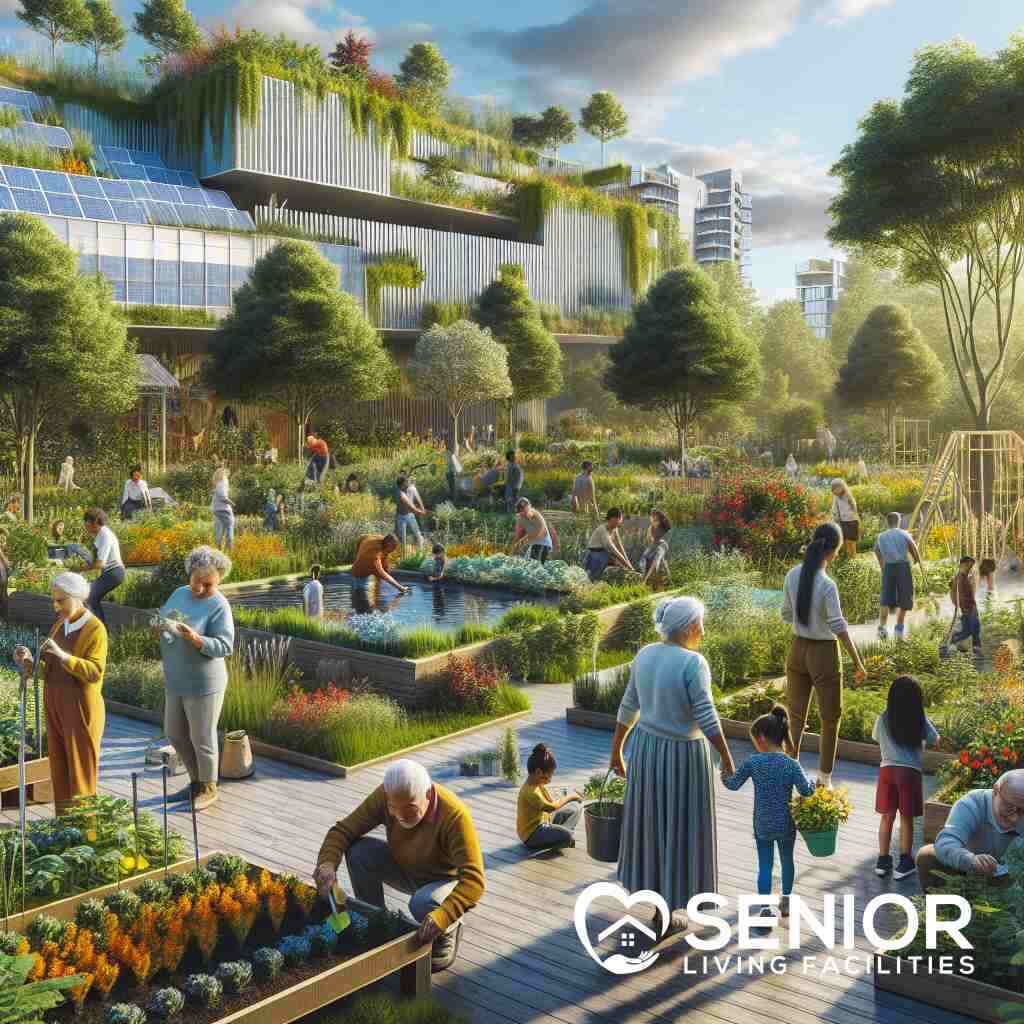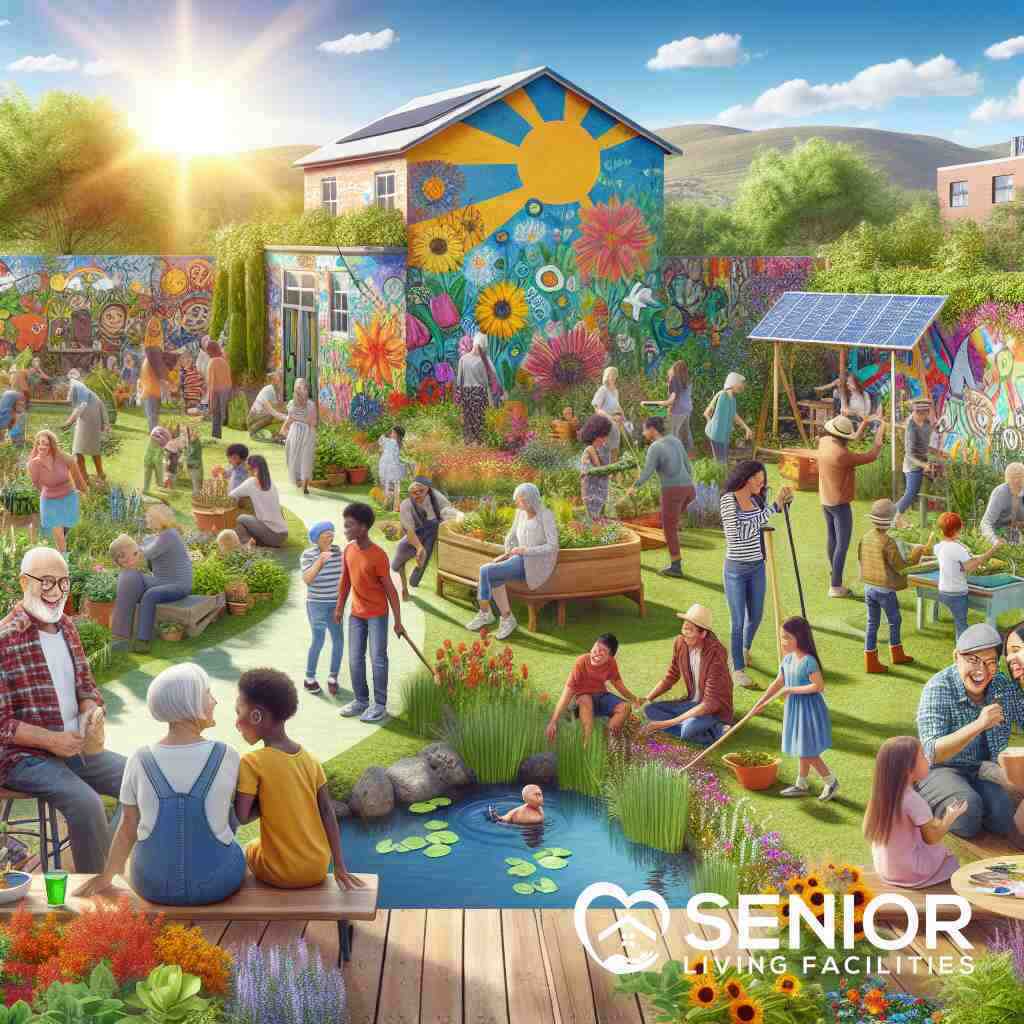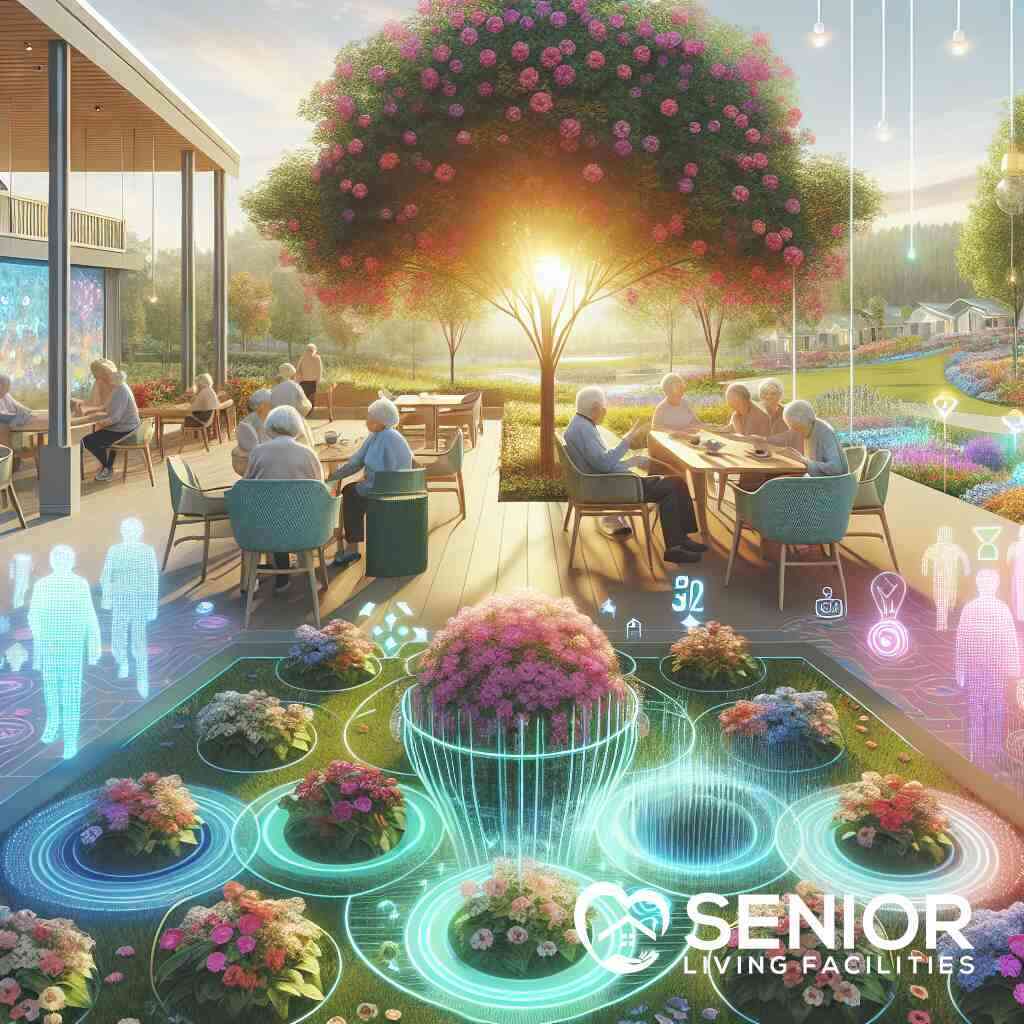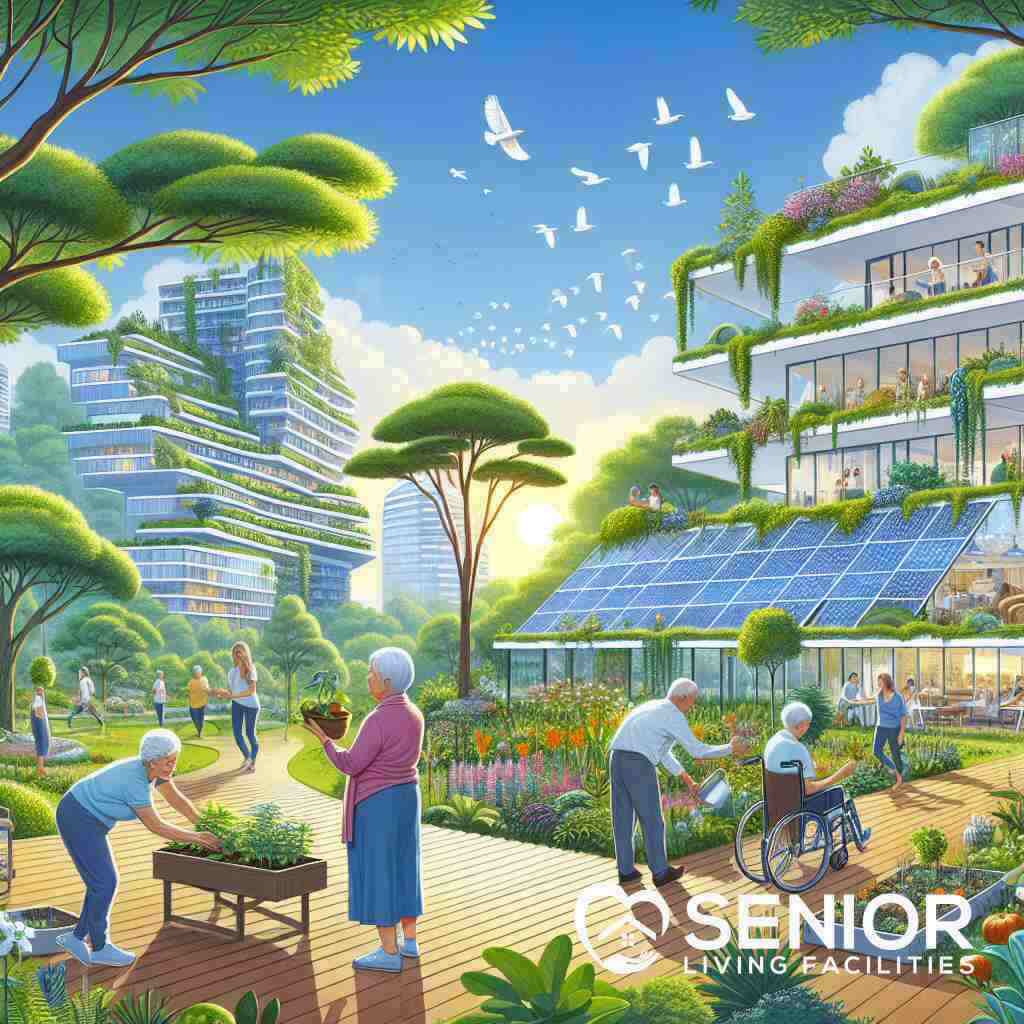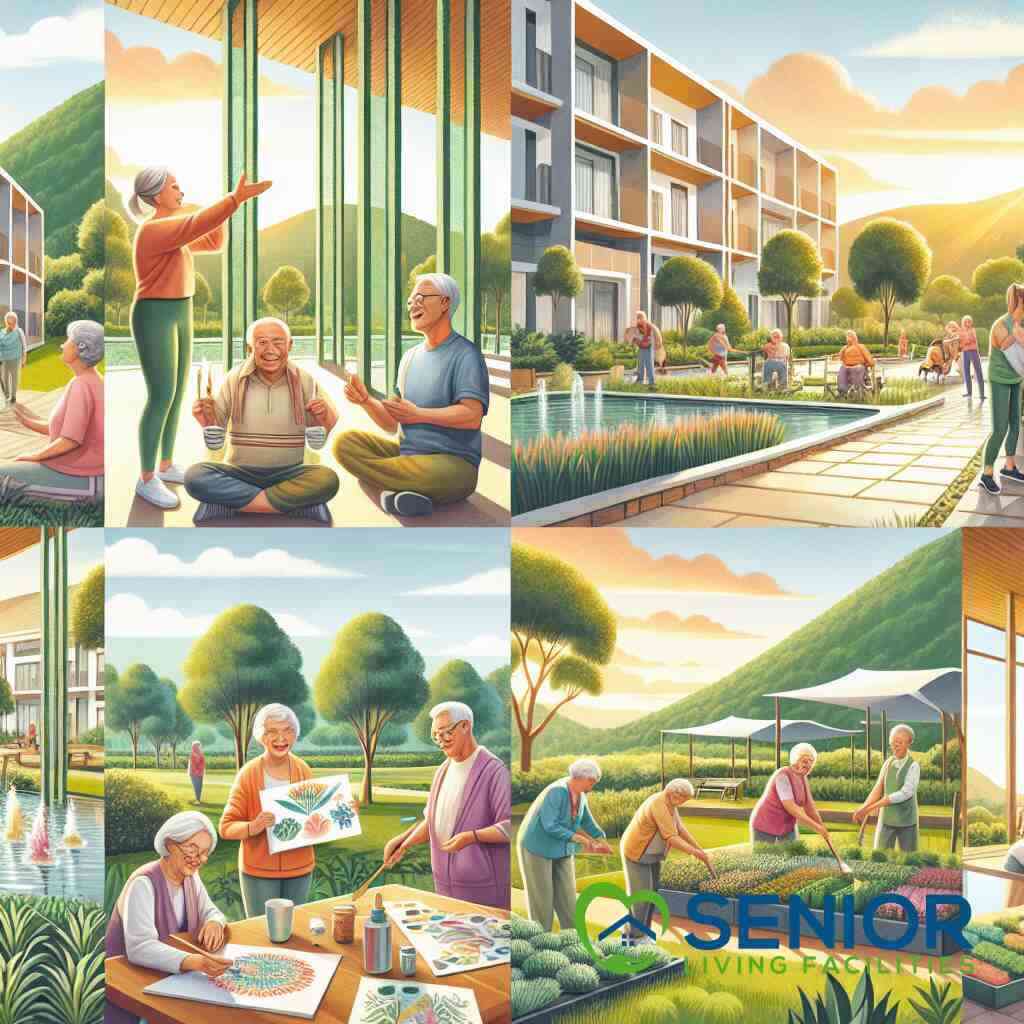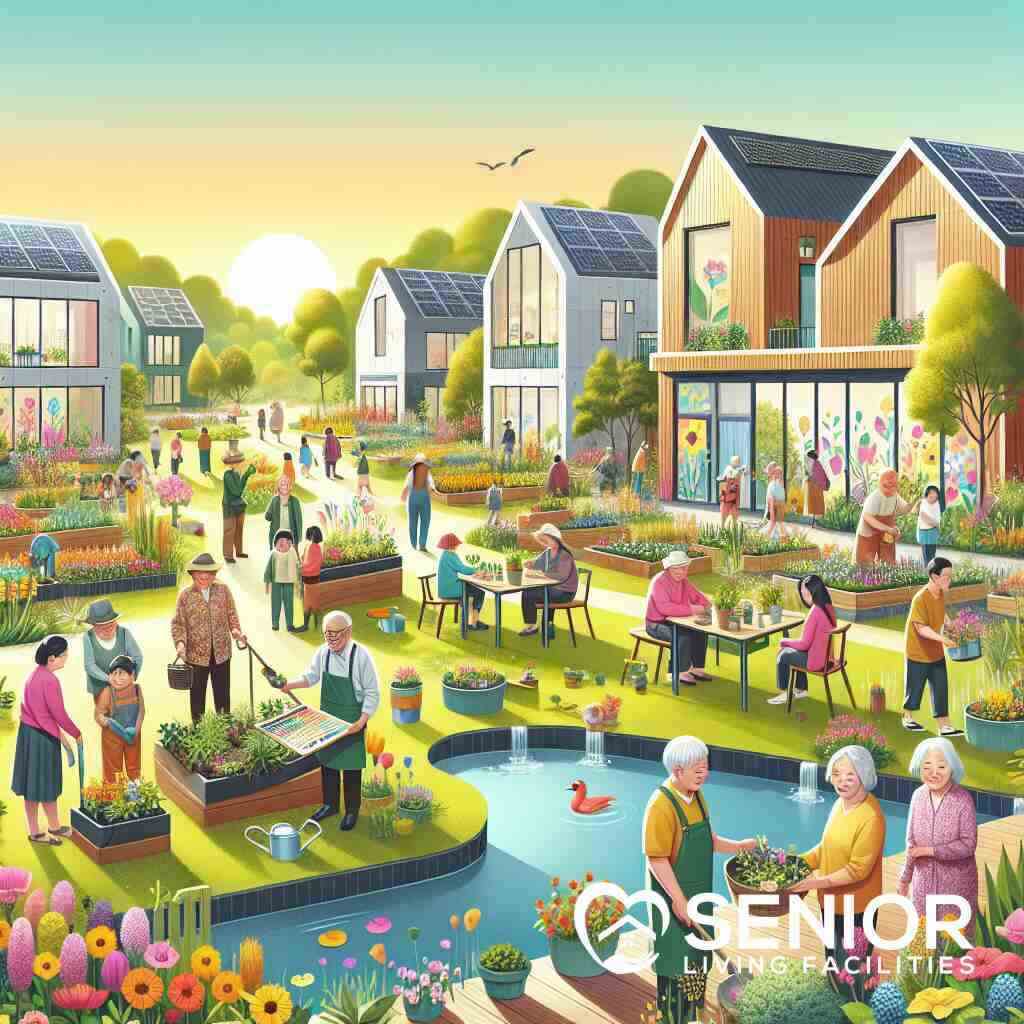
Top 5 Senior Housing Insights for Quality Living
March 11, 2025
Introduction to Senior Housing Paradigms
Understanding the Evolving Landscape of Senior Living
As we navigate the evolving landscape of senior living, a shift towards personalized and community-focused care options is apparent. The traditional constructs of elderly care are seeing transformations into more vibrant and socially engaging environments. American seniors today are seeking living situations that offer independence, empowerment, and a sense of belonging. With advancements in technology and healthcare, new dimensions are being added to the array of senior housing insights, catering to a wide range of needs and desires of the aging population.
The Importance of Quality Living for Seniors
Quality living for seniors transcends mere accommodation; it’s about creating an invaluable quality of life that is essential for fostering emotional well-being. What Does Quality Life in Senior Living Look Like Now? Whether through wellness programs, accessible facilities, or engaging community activities, the focus remains on elevating the everyday experience of older adults. The critical aspect is to harmonize personal freedom with the necessary support, thereby offering a tailored experience that respects individuality while ensuring safety and comfort. Integrating elderly well-beingg enhancement strategies is crucial in curating lifestyles that are not only sustainable but also enriching.
Navigating the Nuances of Senior Care Options
Navigatinh, the diverse options for senior care trends require a deep understanding of the nuances involved. Each type of facility offers unique advantages and is suited for different needs, ranging from independent senior living communities to the comprehensive care provided in long-term facilities. It is essential to assess factors such as levels of medical care, community engagement opportunities, and lifestyle amenities to make informed decisions. By identifying preferences and necessities, seniors and their families can explore pathways that align with their aspirations for aging gracefully.
With these elements comprehensively addressed through platforms like Senior Living Facilities, families are better equipped to find suitable senior living facilities across the United States, ensuring each choice is as individual as the person making it.
1) Independent Living Communities – Freedom and Flexibility
Characteristics of Independent Living Environments
Independent living communities are designed to provide seniors with an enriching lifestyle. These communities focus on personal freedom while ensuring essential amenities and conveniences are readily available. Typically, the independent senior living environment offers a range of housing options- fromm apartments to cottages-to suit varying preferences. Residents can enjoy a maintenance-free lifestyle with housekeeping, landscaping, and other services included. This liveliness is complemented by communal dining options, fitness centers, and art classes, which encourage residents to engage with their environment actively.
Moreover, independent senior communities prioritize creating a welcoming atmosphere where individuals can form lasting friendships. The staff is trained to respect seniors’ autonomy while providing the necessary support when needed. By catering to personal interests and hobbies, these communities ensure that residents can pursue the activities they are passionate about, thus maintaining a vibrant and fulfilling lifestyle.
Comparing Lifestyle Amenities and Social Opportunities
When evaluating independent living environments, lifestyle amenities and social opportunities play a crucial role. These facilities often boast robust activity calendars that include recreational activities for seniors, such as group outings, game nights, and cultural events. Such dynamic programming not only enhances social interactions but also fosters a strong sense of community among residents.
In many communities, fitness and wellness programs are pivotal, encouraging seniors to remain physically active and engaged. These may include yoga classes, water aerobics, and wellness workshops aimed at holistic senior care. Additionally, residents often have access to transportation services, making it easier to travel for shopping, dining, or medical appointments.
Social opportunities in these retirement community features are designed to cultivate a vibrant atmosphere where seniors can thrive. It’s not just about amenities; it’s about how these features contribute to an enriching senior lifestyle. Activities are tailored to meet diverse interests, ensuring every resident finds something they enjoy.
Evaluating Accessibility and Safety Features
Accessibility and safety are paramount in independent senior living, as they ensure a comfortable and secure environment foraging-in-placee strategies. These communities are typically equipped with features such as ramps, elevators, and wide doorways to accommodate mobility aids and make navigating the premises safe and easy.
Emergency call systems and 24-hour security services are standard in many facilities, providing peace of mind to residents and their families. Additionally, safety rails, non-slip flooring, and well-lit pathways are thoughtfully integrated into the property design to prevent accidents and enhance daily living.
Developers focus on planned community designs that adhere to high safety standards while fostering a welcoming atmosphere. These designs ensure that the transition to independent living is seamless, allowing seniors to enjoy their newfound freedom without compromising their safety. By balancing independence with support, independent living communities offer a compelling option for seniors seeking quality living environments.
2) Assisted Living Facilities – Balancing Autonomy and Support
Personalized Senior Care in Assisted Living
Assisted living facilities serve as a bridge between independent living and the comprehensive care provided by nursing homes. They offer a personalized approach to senior care, focusing on maintaining the delicate balance between autonomy and necessary support. Residents can enjoy a private living space within a community environment, offering both seclusion and social opportunities. At facilities across the nation, such as those found in senior living facilities in Texas, a wide range of customized services are available, including medication management, daily living assistance, and nutrition planning. These services ensure seniors receive the right level of support without compromising their independence.
Family involvement is a significant component of personalized senior care in assisted living facilities. Family members are encouraged to participate in care planning meetings and regular updates on their loved one’s well-being. This collaborative approach fosters a sense of community and trust, ensuring care strategies are aligned with the resident’s preferences and needs. Moreover, staff members are trained to respect individual privacy, allowing residents to lead fulfilling lives while knowing assistance is readily available when required. Such a model elevates the standard for elderly lifestyle enhancement in these communities, creating nurturing environments that uphold dignity and personal choice.
Innovative Healthcare Solutions and Senior Wellness Programs
Innovative healthcare solutions and wellness programs significantly influence modern senior care transformation in assisted living facilities. Facilities are increasingly integrating advanced monitoring systems and telehealth services to enhance care delivery. By employing technology in senior care, residents benefit from improved health monitoring and easier access to medical consultations. Initiatives like chronic disease management programs and preventive health screenings are commonly found in communities, such as those in senior living facilities in California, which focus on maintaining the residents’ health proactively.
Equally important are the senior wellness programs designed to promote physical, mental, and emotional health. These programs encompass a broad spectrum of activities, including fitness classes tailored for seniors, nutritional workshops, and mindfulness sessions. Assisted living communities emphasize holistic senior care, ensuring that every aspect of a resident’s well-being is addressed. By implementing comprehensive health and wellness plans, these facilities not only enhance the quality of life for their residents but also empower them to take an active role in managing their health.
Community Engagement and Recreational Activities
At the heart of any assisted living facility is the vibrant community atmosphere that fosters social interaction and engagement among residents. Community engagement in these facilities is pivotal for promoting emotional well-being and active aging. A variety of recreational activities for seniors are offered, ranging from arts and crafts sessions to music and dance classes. These activities are instrumental in building bonds among residents, creating a sense of belonging and community spirit. For example, senior living facilities in Arizona are known for their robust activity calendars, which encourage residents to participate in a range of group activities and outings.
Moreover, many facilities partner with local organizations to provide residents with opportunities for volunteer work and community service. These partnerships often lead to meaningful connections with surrounding communities, further enriching the residents’ lives. Assisted living facilities also host events that welcome family and friends, allowing residents to maintain and strengthen their social networks. By nurturing a supportive and engaging environment, these facilities play a crucial role in enhancing the social and emotional health of seniors, making them a valuable choice for those seeking a balance between independence and support.
3) Long-term Care Facilities – Comprehensive Care for the Elderly
Holistic Approaches to Long-term Senior Care
Long-term care facilities are integral in providing comprehensive care for seniors who require ongoing assistance and medical attention. Emphasizing a holistic senior care approach, these facilities recognize the significance of addressing not just physical health but also emotional and social well-being. Customized care plans are developed to suit the individual needs of residents, incorporating wellness programs, therapy services, and daily assistance. By fostering a nurturing environment, long-term care facilities ensure that seniors receive compassionate care that respects their dignity and promotes overall quality of life. Additionally, these facilities often integrate planned community designs to create an atmosphere that feels like home, encouraging social interactions and community involvement among residents.
Advanced Medical Services and Technological Innovations
For seniors in long-term care facilities, access to advanced medical services is paramount. These facilities are equipped with medical technologies and skilled healthcare professionals, providing a high standard of medical care tailored to each resident’s needs. A focal point of modern senior care transformation is the adoption of technological innovations such as electronic health records, telemedicine, and health monitoring systems. These advancements enable better management of chronic conditions and enhance emergency responsiveness, ultimately improving the quality of life for residents. The implementation of nursing home care insights further informs the strategies adopted, ensuring that medical care remains at the forefront of service delivery within these institutions.
Future Trends in Long-term Senior Housing Development
As the demand for long-term care facilities continues to grow, we anticipate significant senior living trends in 2025, shaping the future of these communities. Developments in technology, architecture, and care models are expected to redefine senior housing landscapes. There is a growing emphasis on eco-friendly building practices, as seen in eco-living in senior housing, promoting sustainability and enhancing residents’ living environments. Additionally, long-term care facilities will likely expand their offerings around personalized healthcare solutions and intergenerational interactions. These trends illustrate a shift towards creating dynamic, supportive environments that cater to the evolving needs of the aging population, ensuring long-term care facilities remain relevant and adept at providing quality care.
4) Intergenerational Living Communities – Fostering Connections Across Ages
Unique Benefits of Intergenerational Living
Intergenerational living communities present a dynamic approach to senior housing, emphasizing the importance of connection across different age groups. These communities combine the experiences of seniors with the vitality of younger generations, creating a symbiotic relationship that fosters mutual support. Seniors benefit from the vibrancy and energy brought by younger residents, while youths gain from the wisdom and life experiences shared by their elder counterparts. This blend of ages in one community enhances quality living for seniors by ensuring they remain active participants in a broader societal context, thus reinforcing their sense of purpose.
The design of intergenerational communities often includes shared spaces where residents of all ages can gather for social activities. From community gardens to cultural events, these settings are designed to encourage interaction and engagement. This cross-age collaboration not only bridges generational gaps but also strengthens community bonds, making it a compelling housing option within aging-in-place strategies. By living in such environments, seniors have the opportunity to engage with different perspectives, enriching their lives with varied interactions and contributing positively to their mental well-being.
Promoting Emotional Well-being and Active Aging
Intergenerational living is pivotal in promoting emotional well-being and facilitating active aging among seniors. Living alongside multiple generations encourages older adults to adopt a more active lifestyle, as they are inspired by and often eager to participate in the events and activities that attract younger residents. These vibrant settings naturally facilitate opportunities for seniors to remain physically, mentally, and socially engaged, which are critical components of healthy aging.
Moreover, the emotional support gained from intergenerational relationships cannot be overstated. Regular interaction with younger individuals can help alleviate feelings of loneliness and isolation that many seniors face, providing emotional nourishment and improving overall mental health. This environment creates a natural network of support, where community members look out for each other regardless of age, fostering a nurturing atmosphere conducive to elderenhancement of the being enhance the elderly. living in such communities often report higher satisfaction levels and demonstrate significant psychological wellness compared to those in more age-segregated environments.
Case Studies of Successful Multigenerational Models
Looking at successful case studies globally, intergenerational communities have proven their viability and impact on senior living. In numerous models across the United States and Europe, these communities have thrived by integrating housing, social care, and educational opportunities into their frameworks. One prominent example is the collaboration between universities and senior living facilities, where older adults and students share experiences and resources.
In places like the Netherlands, pioneering facilities host college students alongside older adults, trading affordable accommodation for time spent interacting with seniors. This model not only promotes lively atmospheres but also encourages learning and empathy, making it a vibrant environment for all participants involved. Another successful example is a senior living model in Florida, where a blend of families and retirees live together, enjoying shared amenities and community events that cater to a diverse age group.
These innovative intergenerational models provide valuable insights for future senior housing developments, highlighting the importance of designing communities that embrace diversity and connection. They emphasize how intergenerational engagement is not merely beneficial but essential in crafting supportive environments that cater to seniors’ holistic needs. Such models underscore the lasting positive effects they have on resident morale and overall community dynamics, making them attractive solutions for modern senior living needs.
5) Sustainable Senior Housing – Living Green in the Golden Years
Ecological Design Principles for Senior Living
Ecological design principles have become integral to the development of sustainable senior housing. By incorporating eco-friendly practices and materials, senior living facilities are creating environments that minimize environmental impact while enhancing livability. Utilizing renewable resources and energy-efficient systems not only reduces the carbon footprint but also contributes to healthier living spaces. The adoption of green roofs, solar panels, and natural ventilation systems creates an environment that aligns with the ethos of eco-living in senior housing. As more seniors seek housing that reflects their commitment to environmental conservation, designers are increasingly motivated to innovate and implement sustainable practices.
Cost-effective and Resource-efficient Housing Solutions
Incorporating resource efficiency is central to creating cost-effective senior living solutions. Sustainable housing developments leverage advanced construction techniques and materials to build structures that conserve energy and water, significantly lowering utility costs. Insulation innovations, LED lighting, and smart water management systems are just a few examples of how facilities are lowering operational expenses while delivering quality living experiences. These measures do not only resonate financially with residents but echo a broader commitment to resource conservation. For seniors, choosing a community that integrates these strategies means less financial strain and a more sustainable lifestyle, making it an attractive proposition within the realm of aging-in-place strategies.
The Future of Green Building in Senior Living Facilities
The future of senior housing is inexorably linked to the growth of green building practices. Exploring Eco-Living Innovations at Senior Living Facilities As the industry evolves, we anticipate more advanced eco-friendly technologies and designs becoming the norm. Future senior living facilities will likely see the integration of smart home technology with sustainable architecture, promoting an environment conducive to both ecological and personal well-being. This shift signifies a move towards planned community designs that prioritize environmental stewardship alongside resident comfort. Moreover, with regulatory incentives and increased awareness, green building practices will not only become more prevalent but also economically advantageous, shaping the senior housing landscape for generations to come. These advancements underscore the potential for eco-living in senior housing to redefine the standards of quality living for seniors.
Enhancing Senior Lifestyles Through Technology and Innovation
Integrating Smart Home Technology in Senior Housing
Smart home technology has revolutionized senior housing, offering cutting-edge solutions to enhance daily living. These innovations empower residents through increased safety and convenience. Devices such as voice-activated assistants and smart appliances provide seamless integration into daily routines, allowing seniors to control their environment effortlessly. For example, smart thermostats and lighting systems can be adjusted remotely, enhancing comfort and energy efficiency. Furthermore, the implementation of smart security systems, including cameras and automated locks, ensures that safety is always prioritized. By embracing these advanced technologies within senior living facilities, seniors enjoy a blend of modern comfort and security tailored to their unique needs.
The culmination of smart home technology adoption in senior housing creates environments where aging in place becomes more feasible. Residents benefit from technology to assist with routine tasks and complex activities like medication management. By offering such comprehensive support, smart home technology plays a significant role in the aging-in-place strategies that facilitate sustainable living choices for seniors.
Technological Advances in Elderly Healthcare
Technological advancements have transformed elderly healthcare, considerably benefiting seniors and transforming how care is delivered and managed. Telehealth services have become increasingly prevalent, offering seniors convenient access to healthcare providers without needing to leave their homes. These services facilitate regular consultations, allowing for prompt medical assessment and intervention when necessary. Additionally, wearable health monitors provide real-time data on vital signs and other health indicators, enabling proactive management of chronic conditions.
Moreover, the integration of artificial intelligence in healthcare technologies enhances diagnostic capabilities and personalizes treatment plans. Robotics, employed in rehabilitation therapies, also contribute significantly to elderly care, fostering independence and improving recovery outcomes. These modern senior care transformation innovations showcase the impact of technology in refining service delivery and empowering seniors to maintain their health actively.
Digital Platforms for Social Connection and Engagement
Digital platforms serve a crucial role in maintaining social connections and fostering engagement among seniors. With the rise of technology use among older adults, platforms that promote interaction have become essential in combating loneliness and isolation. Virtual communities offer opportunities for seniors to participate in discussions, share experiences, and continue learning. Social media platforms also facilitate interaction with family and friends, helping maintain critical social bonds.
Online classes and virtual events have opened new avenues for recreation, education, and entertainment, enriching seniors’ lives by keeping them engaged and motivated. Digital literacy programs are now integral to senior living facilities, empowering residents to navigate these platforms confidently. By leveraging digital tools, seniors can access a wider network of connections and resources, thus significantly enhancing their quality of life. For more insights on this topic, explore senior living blog insights, which delve into how technology is reshaping senior care dynamics.
Conclusion – Crafting Personalized Journeys for Optimal Senior Living
Summarizing Key Insights and Takeaways
Understanding the diverse dynamics of senior housing is paramount for fostering quality living environments that promote well-being and autonomy for older adults. Through exploring various senior care trends, we see a robust focus on community engagement, technological advancements, and environmentally sustainable practices. This landscape shift marks a significant departure from traditional models, embracing personalized approaches that respect the individuality of each resident. From senior living facilities in New York to those in smaller communities, the evolution reflects a universal commitment to enhancing the lives of seniors.
The Path Forward for Senior Care Communities
The future of senior care communities hinges on their ability to adapt to the evolving needs and desires of an aging population. Growing demand for amenities such as tech innovations in senior living or embracing initiatives that prioritize holistic care, setting new standards in the industry. As we look towards the future, fostering agile facilities capable of integrating the latest senior living trends in 2025 will be essential to maintaining their relevance and appeal. Senior care communities are likely to continue developing multi-functional environments that offer both comprehensive care and rich, community-driven experiences.
Empowering Seniors Through Thoughtful Housing Choices
Empowering seniors involves offering them choices that align with their personal and well-being goals. With a multitude of aginaging-in-placeategies available, individuals and families are encouraged to consider options that best suit tlifeelife stage preferences. Leveraging platforms like Senior Living Facilities, families can explore and connect with housing that offers the right balance of independence, safety, and community interaction. By prioritizing these thoughtfully crafted experiences and solutions, seniors can truly thrive in environments that cater to their unique needs, ensuring a high quality of life during their golden years.
Embarking on this journey of informed decision-making of his own. For those ready to embark on this journey of informed decision-making and tailored living experiences, aging-in-place strategies provide a valuable framework for empowering choices. As we continue to innovate and adapt, the future holds promising prospects for enhancing senior living experiences.
Frequently Asked Questions
Question: How do independent senior communities balance freedom with essential amenities?
Answer: Independent senior communities are designed to offer a lifestyle that combines personal freedom with essential amenities to ensure quality living for seniors. These communities typically provide various housing options, from apartments to cottages, allowing residents to choose according to their preferences. By offering maintenance-free living, including services like housekeeping and landscaping, seniors can focus on enjoying their independence. Essential amenities such as communal dining, fitness centers, and community activities are strategically integrated to encourage social engagement. The staff in these communities are dedicated to providing support only when necessary, ensuring that seniors can lead a vibrant and autonomous life while having access to a secure environment. At Senior Living Facilities, we help you explore these communities to find a perfect match that suits your lifestyle and independence needs.
Question: What innovative healthcare solutions can seniors expect in assisted living facilities?
Answer: Assisted living facilities are incorporating innovative healthcare solutions to enhance the quality of care provided to seniors. Many facilities now feature advanced monitoring systems, telehealth services, and personalized wellness programs. These innovations facilitate better health management and ensure prompt attention to medical needs, promoting holistic senior care. Residents also enjoy tailored wellness programs that include fitness classes, nutritional workshops, and mindfulness sessions designed to support mental, physical, and emotional well-being. Senior Living Facilities facilitate contact with various assisted living communities, ensuring you find a location that embraces modern senior care transformation and caters to your unique health requirements.
Question: Can you explain how intergenerational living communities enhance emotional well-being for seniors?
Answer: Intergenerational living communities are key to enhancing emotional well-being and fostering active aging. By integrating different age groups within one community, these environments encourage cross-generational interaction, enriching daily life for seniors. Seniors benefit from the energy and perspectives of younger residents while also sharing their wisdom and experiences. This dynamic atmosphere reduces feelings of loneliness and isolation, promoting a sense of belonging and purpose. Activities and shared spaces are designed to encourage interaction, building a supportive network that boosts overall morale. Senior Living Facilities covers these forward-thinking housing options, ensuring that you find a community that not only meets your living needs but also enhances emotional well-being through enriched social connections.
Question: How ddoSenior Living Facilities ensure quality living through sustainable senior housing options?
Answer: Senior Living Facilities is committed to promoting sustainable senior housing options that align with ecological design principles and resource efficiency. Our platform features communities that integrate renewable resources, energy-efficient systems, and eco-friendly practices within their design. By doing so, they not only reduce environmental impact but also lower utility costs, offering cost-effective senior living solutions. Such measures create healthier and more livable environments for seniors who are conscious of sustainability. We help you explore eco-friendly communities that match your values and lifestyle preferences, ensuring a commitment to quality living in the golden years.
Question: How does the blog ‘Top 5 Senior Housing Insights for Quality Living’ contribute to understanding senior housing trends?
Answer: The blog ‘Top 5 Senior Housing Insights for Quality Living’ provides a comprehensive overview of current senior care trends and housing options, highlighting the importance of quality living for seniors. It discusses various insights such as independent living, assisted living, intergenerational communities, long-term care, and sustainable housing, offering in-depth perspectives on each. This valuable resource is rooted in understanding seniors’ needs for independence, healthcare innovations, and community engagement. Exploring the Top Senior Living Options for 2024 By leveraging insights from this blog, individuals and families can make informed decisions about senior living options. Senior Living Facilities use this and other insightful content to guide families in choosing the right environment, facilitating aging-in-place strategies, and enhancing senior lifestyles.
